Are you stuck with the golf equipment lingo, feeling like you’re trying to decipher a foreign language every time you step into a pro shop?
You’re not alone. For many golf enthusiasts, the thrill of getting new equipment is short-lived and replaced by confusion.
Quite often, even professionals are confused by the constant changes in the words and terms used to describe golf equipment.
As a golfer, I know how knowing the equipment terminology can change the approach to club choice and performance. Let’s start with the most basic but important Golf equipment vocabulary.
Widely Used/Famous Terms
Golf equipment terms encompass the various techniques and club selections used to hit the ball.
Understanding these terms is crucial for effective communication on the course and improving your overall game strategy.
1. Driver
The driver, also known as the “1-wood,” is the longest club in a golfer’s bag and is used as a tee club. It has a large rounded head with a volume of 460cc and is the least lofted club in the entire set, with lofts ranging between 8-12 degrees.
It is employed mainly on the par-4 and par-5 holes to maximize the distance on the first hit.
2. Putter
The putter is the golf club most suited for use around the green to roll the ball into the hole. It has a flat-faced head and low backspin (generally 2-4 degrees) to ensure the ball does not bounce off the turf.
Several types of putters – blade and mallet- are designed differently to provide different balance and alignment to the players.
Moderately Known Terms
These terms represent the core clubs in a golfer’s bag, each designed for specific situations on the course. Understanding their characteristics is crucial for any player looking to improve their game.
1. Wedge
A wedge is a specialized club used for shots requiring high accuracy and a relatively low distance. It is often employed for shots ranging from the green to chipping and getting out of bunkers.
Wedges are categorized based on the lofting, such as the pitching wedge, gap wedge, sand wedge, and lob wedge.
The high loft is used to get a high trajectory with less distance so that the ball has an accurate roll near the green.
2. Iron
Irons are all-purpose clubs that can be used for anything from long drives to short chips. They are numbered from 1 to 9, where the smaller numbers help to achieve greater distance, and larger numbers ensure better loft and control.
Irons have a flat incline face and are used to hit the ball with an upward backspin to gain more control.
These are important for precision and ball direction hence should be part of every golfer’s equipment.
3. Wood
Woods are clubs meant for hitting long distances and are usually employed for tee or other long-distance shots in the fairway. Modern woods are most often created out of metal, despite the name.
It has a large, round-shaped head and a long shaft, which assists in producing sufficient clubhead velocity and requisite distance.
The most regular woods are the driver (1), fairway woods (3, 5), and sometimes even more considerable numbers of woods.
These are essential for long holes that require efficient travel across expansive distances.
Less Common Terms
These are relatively less frequently used terms and include a combination of equipment, parts of the course, and some of the jargon used in golfing.
Knowledge of them can improve your golfing vocabulary and offer information on various parameters of the sport.
1. Balata
Balata is a synthetic rubber used to manufacture expensive golf balls as a surface coating. It offers a good spin and is good enough for the professional players.
Although modern synthetic materials have marginally displaced balata, the term refers to soft-shelled, high-rotation golf balls.
Balata balls are softer in texture and have better workability than balls with harder cover, but the latter is more long-lasting.
They are preferred by professional and low-handicap players mainly because of the enhanced control around the greens.
2. Baffy
A baffy is a type of golf club that was widely used during the early part of the 20th century. It was essentially a high-lofted wood and probably falls in today’s 4-wood- or 7-wood range.
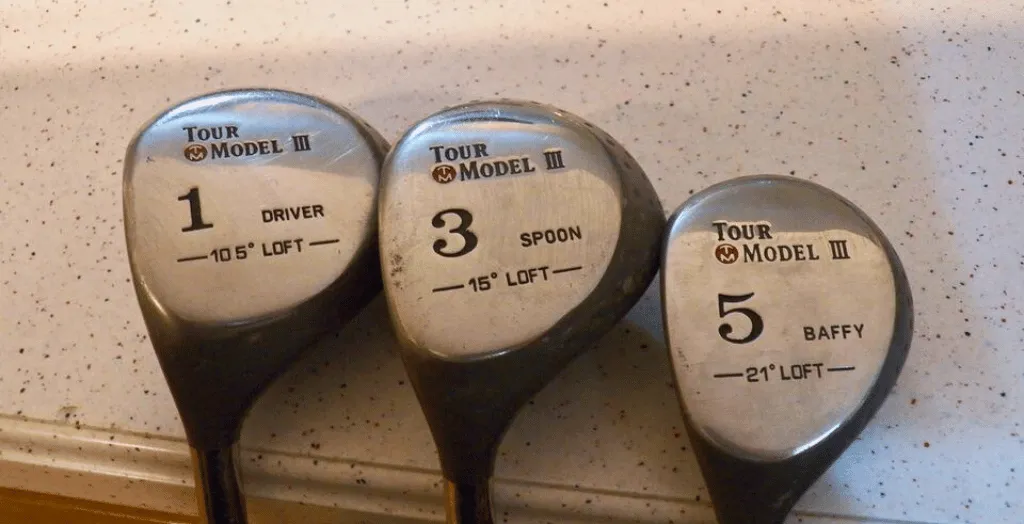
The baffy has a shorter shaft and higher loft than a spoon (another earlywood) and was used for taking on shots or taking out of a bunker.
Although no longer in practice, the term gives an understanding of the development of equipment in golf and how modern clubs have replaced unique antique ones.
3. Caddie
A caddie is an individual who carries a player’s golfing equipment bag and helps during a game. Some responsibilities include advising on which club to use, how to read the green, and what strategy to use when at the course.
Caddies can be very useful for professional and amateur players mainly because of their understanding and acquaintance with the course.
They are not only the ones who carry the bags but can also be valuable teammates, especially in professional championships where their input can greatly affect a player’s performance.
4. Clubhead
The clubhead is the portion of the golf club that comes into contact with the ball. It is fixed on the shaft and is made in different forms and sizes based on the club’s kind. For woods, it is larger and hollow; for irons, it is solid and shaped like a blade.
Some parameters influenced by the clubhead design include distance, accuracy, and the amount of spin.
Factors such as weight distribution, face angle, and sweet spot position are specific design parameters that define the performance of a club.
5. Dimples
Dimples are the small indentations covering the surface of a golf ball. They are not merely there to improve looks but are fundamental to the ball’s flight.
Troughs or dimples form a micro-layer of air around the ball, enabling it to travel a longer distance.
They also assist the ball to have a stable flight by causing a lift. The density and arrangement of the dimple differ from one ball model to another, which in turn influences some factors such as distance, spin, and control.
6. Gimme
A “gimme” is a shot deemed so easy that the opponent will allow the other player to take it without hitting the ball. It is a kind of gentlemen’s agreement among the players, mainly applied in casual games to accelerate the game.
The distance a gives me is not fixed but commonly ranges from where a player puts the ball to the hole.
Gimmes are quite frequent in casual games but are prohibited in serious competitions where each putt has to be made.
7. Stymie
A stymie was a situation that existed in early golf where a player’s ball on the green would prevent another player from reaching the hole.
On older rules, players were not allowed to mark and lift their balls on the green, hence the positioning intending to interfere with opponents’ shot-making.
This rule was withdrawn in 1952 for stroke play and in 1984 for match play. Although it is not used in today’s golf, understanding the term helps one appreciate the game’s history and rules.
8. Fairway Wood
A fairway wood is a particular kind of golf club used to hit the ball from the fairway or even tee. Interestingly, although the term ‘fairway wood’ suggests that the club is made of wood, most current models are metal.
They have a bigger head than irons but are small compared to the drivers, enabling players to hit the ball to the required distance while maintaining control.
Some common fairway woods are 3-wood, 5-wood, and 7-wood, with different lofts that will give different distances.
The general-purpose clubs can be used for striking the ball from greater distances or when the driver cannot be used because of narrow fairways.
9. Gap Wedge
A gap wedge, also referred to as an approach wedge or a utility wedge, is used to cover the distance between a pitching wedge and a sand wedge. It usually has a loft of between 50-54 degrees.
This club is helpful in those shots that are not close enough to be hit with a pitching wedge, nor far enough to be hit with a sand wedge, offering better short-shot accuracy.
Most golfers find it especially useful for shots between 90 and 110 yards or shots within the greens.
10. Hybrid Iron
A hybrid iron, commonly called just a hybrid, is a club that falls between the irons and wood. It is often used in place of long irons, (2, 3, or 4) within a player’s golf set. Hybrids have a bigger head size than the irons, are less likely to dig, and are easier to strike, particularly from bad stances.
They provide more accuracy and higher trajectory than long irons and are used by golfers for striking longer shots or targeting fairways.
11. Lob Wedge
A lob wedge is a club with a low backside and thin sole. It makes short, high shots and has 60-64 degrees lofts.
It is utilized for any shot when the golfer needs to hit as high as possible with as little roll as possible, such as shots over objects or to halt the ball on the green.
The lob wedge is best used for shots close to the green and can clear an obstacle or gently place the ball. It’s a unique club that must be wielded properly but can be highly beneficial in complex short-game scenarios.
12. Pitching Wedge
A pitching wedge is a golf club used in shots that are expected to cover distances between 100 and 130 yards, depending on the player’s power. It is lofted between 44-48 degrees, making it the lowest-lofted wedge in most sets.
Pitching is a very useful club for full wedge shots, pitching, and sometimes chipping. This club is situated between the short irons and the more specialized wedges and is very important for distance management in the short to mid-range shots.
13. Sand Wedge
A sand wedge is a particular kind of golf club that is used mainly to hit the balls on the sand traps. It has a loft of roughly 54-58 degrees and has a large, heavy sole that enables the club to run through sand without sinking.
Due to its design, the sand wedge can be opened to the face and slid under the ball to create that explosion of sand that lifts the ball out of the bunker.
It is excellent for bunker shots, but it also works well for high, soft landing shots of different types of lies on the green.
14. Beach (Cat Box)
‘Beach’ or ‘cat box’ is another word for a sand bunker or sand trap in golf. These obstacles on a sandy golf course are meant to test players and shield some parts of the course.
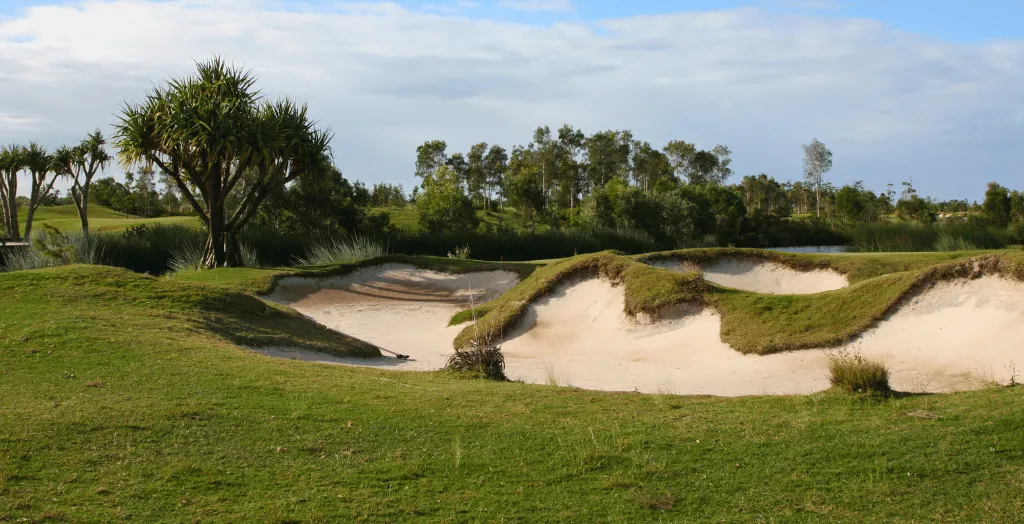
The terms amusingly refer to the sand trap as a beach and a cat’s litter box on the green. Although these are the terms used in official documents, gamers often use these colloquial terms, especially casual ones.
Knowing what these terms mean, one can follow conversations on the course and make the game a little funnier.
15. Can
The term “can” in golf is slang used to mean the hole on the putting green. This term is believed to have started when actual tin cans were used as targets during the beginning of golf.
Today it is used just to describe a putt and in the same context as in the example above “He canned that 20-footer”.
By knowing this term, players can understand and follow conversations and commentaries on golf. This is not considered official language, but it is something that is commonly said by golfers, from beginners to professionals.
16. Carpet (Dance Floor)
‘Carpet’ or ‘dance floor’ is the slang for putting green. These metaphors compare the level of the green to a carpet or to a dance floor, created by the closely mown surface.
These terms are sometimes used to explain the state of the greens, for instance, when someone says; “The carpets are rolling fast today.”
It aids the greener in understanding what is said and participating in everyday golf jokes. These terms may not be official, but they are very much used and enrich the language used in golf.
17. Dawn Patrol
The meaning of ‘’Dawn patrol’’ is the first group of golfers who go out to play at the break of dawn, or even as the sun rises.
These early birds prefer playing in a relaxed environment, playing quickly, and enjoying well-maintained lawns.
The term used is related to commitment and passion towards the game. Regular golfers consider the dawn patrol to be something of prestige to be able to join that group.
Knowledge of this term gives information about the golfer culture and various options available on the golf course.
18. Dog Track (Goat Track)
The abusive nicknames of ‘dog track’ or ‘goat track’ refer to a golf course in bad shape or was constructed to an inferior standard.
Some of these metaphors liken such courses to dog racing or goat racing facilities, suggesting they are not worthy of being considered golf courses.
The terms may relate to questions such as the poor quality of fairways, lumpy greens, or general abandonment.
Although these terms are not polite, knowing them allows golfers to comprehend the reviews and recommendations of other players.
19. Duffer (Hacker)
A “duffer” or a “hacker” is an informal term for a bad or an amateur golfer. It is used to describe a person who enters a game occasionally or is not so skilled most of the time, he constantly shanks shots or experiences problems with basics.
Although such terms can be said to be somewhat abusive, they are quite popular and can be used in everyday light talk that involves golf.
It is crucial to be careful with these terms when discussing golf and referring to other players, as they can be used to offend or cause offense.
20. Jungle (Cabbage)
The thick, heavy rough is slang for “Jungle” or “cabbage “ on the golf course. These express that thick, closely mown grass is like a jungle or a field of cabbage from which to play.
The terms are used in the context of the specific rough that can hide the ball or make clean hit highly challenging.
Knowledge of these terms enables the players to decipher course preparation and the chances and risks attached to every decision while on the fairway.
21. Long Game
It is advisable to get into a long game when using wood when entertaining a stiff breeze, or while on a pure long hole when using wood, a long iron, or a hybrid. It involves shots from the tee and shots to the green and sometimes even before the green.
The way long is played needs power, and accuracy in conjunction with the competency in maneuver or shaping of the shots.
Tactical ability at that length is necessary when handling the positioning and building up for scoring chances and general course creation.
Although longer distance shots dominate the imaginations of a newcomer, both the long and the short shots are crucial for efficient playing.
22. Loop
Being in a loop means playing a round of golf, especially the standard measure of 18 holes. It probably has its roots in the fact that most golf courses end at the clubhouse, giving the appearance of a loop.
Commonly used by caddies, it means something like, ‘I am going to be looping this afternoon’ or ‘I loop for Joe Bloggs. ’
As with most abbreviations used in golf, understanding it facilitates the decoding of many things said about golf, especially in scheduling or the conveying of activities to be undertaken.
This is another term used loosely to mean a full round of golf.
23. Short Game
The ‘short game’ is any shot made around or at the green, generally beneath the 100-yard mark. This includes the chips, pitches, bunker, and putting.
Knowledge of the short game is particularly important as this is where most of the strokes are either gained or lost.
Around the green or on the green requires touch, finesse, and many tactics to meet a multitude of lies. Most golf gurus recommend short games for the primary reason of lowering scores.

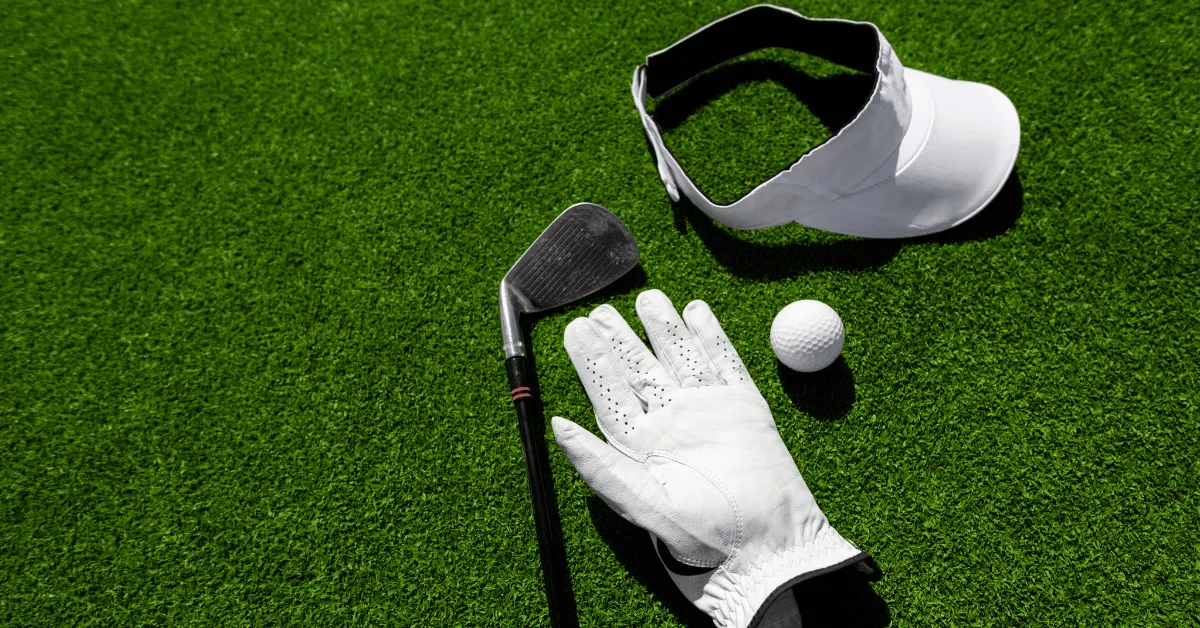
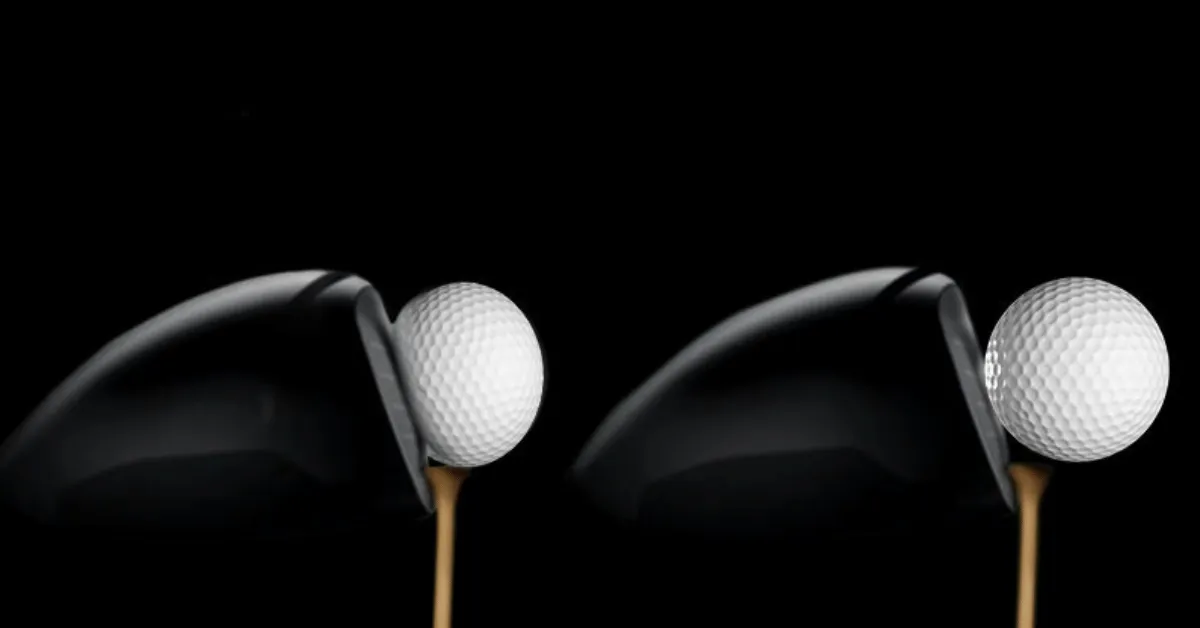

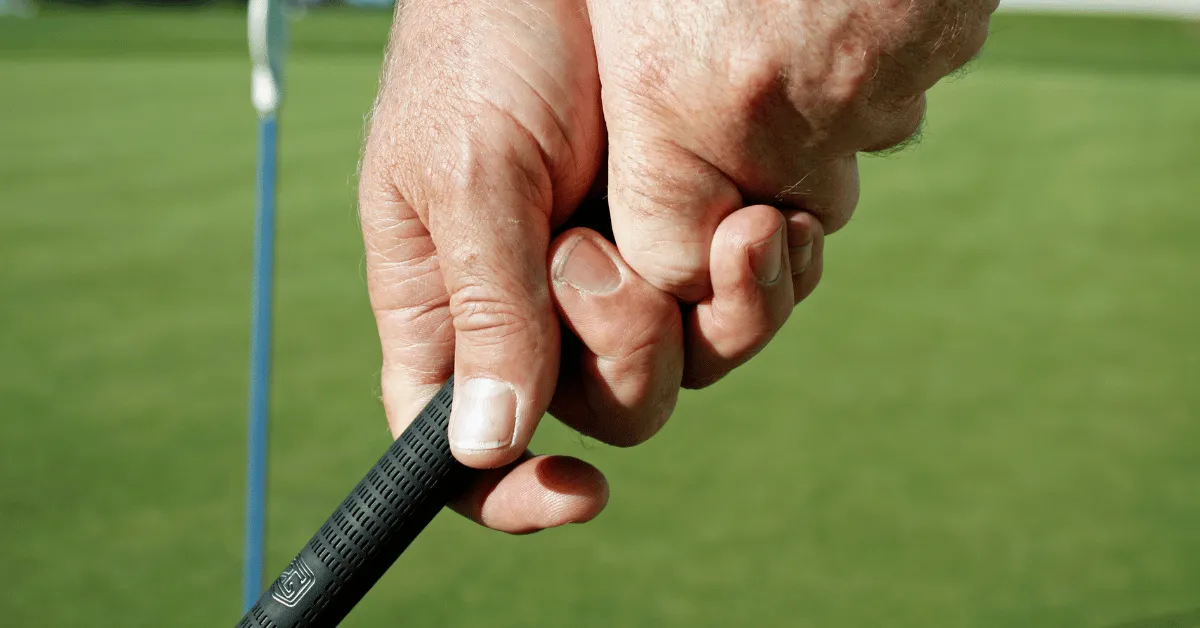
0 Comments